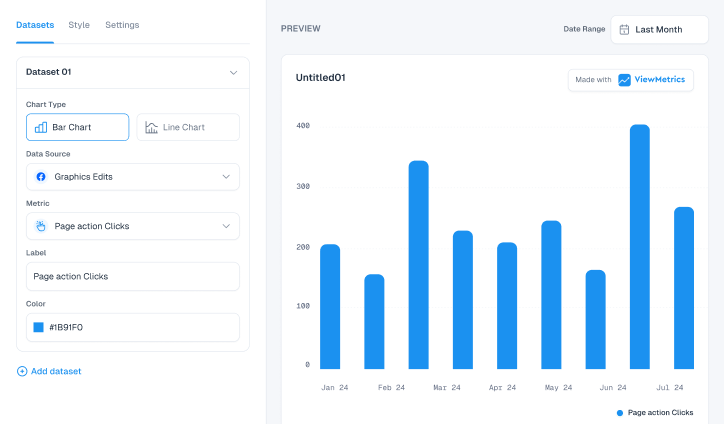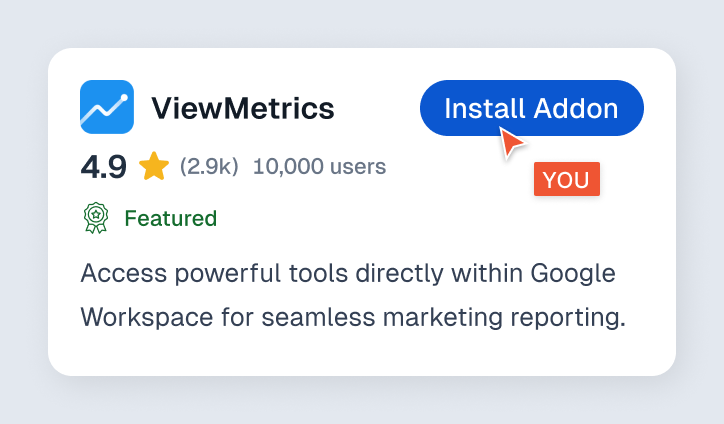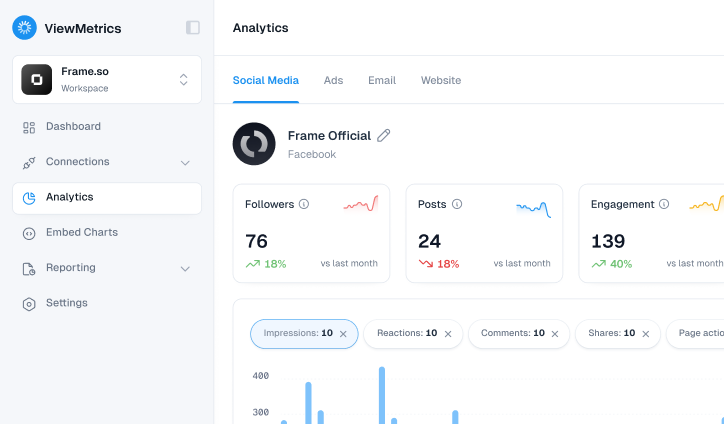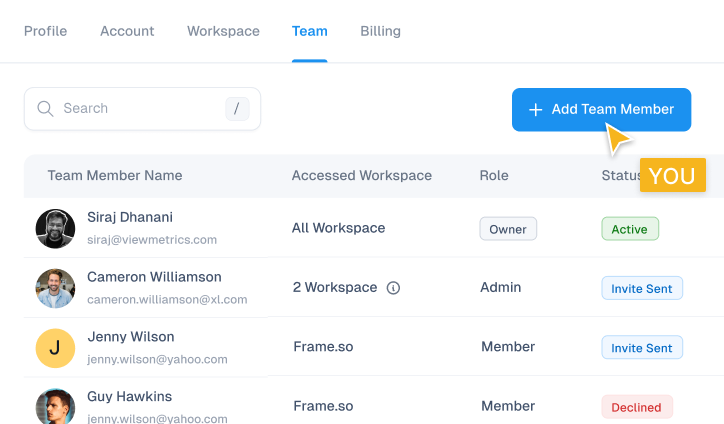Summary for the Blog
- Growth Marketing is a data-driven approach that focuses on the entire customer journey, not just the initial stages of the marketing funnel.
- The key components of a growth marketing strategy include understanding the customer lifecycle, gathering feedback, creating data-driven content, and using A/B testing.
- The Growth Marketing Funnel is composed of five stages: Acquisition, Activation, Retention, Referral, and Revenue.
- Success is measured with key metrics such as Customer Acquisition Cost (CAC), Customer Lifetime Value (CLTV), and Conversion Rate.
As marketers, our primary focus is often on growth. We aim for growth that’s not just any growth but one that’s measurable, repeatable, and sustainable. This growth should benefit both our customers and employees.
Growth marketing is a powerful tool that helps us achieve this goal. By using data from marketing campaigns and tests, we can gain valuable insights into what works and what doesn’t. This knowledge allows us to continuously improve our strategies and drive business growth.
In this guide, we’ll explore everything you need to know about growth marketing. We’ll cover the essential concepts, strategies, and best practices that can help you build a strong foundation for your company’s success.
What is Growth Marketing?
Growth marketing is a strategic approach that goes beyond traditional marketing tactics. Instead of simply promoting a product, it aims to create business growth by increasing customer loyalty. This approach maximizes your marketing efforts by using techniques like A/B testing, email marketing, SEO, and data analysis to develop more useful strategies for driving growth.
Unlike traditional marketing, which often relies on extended campaigns, growth marketing focuses on shorter, more agile cycles of innovation. Just-in-time and micro-campaigns are designed to address the specific needs of the moment. By analyzing the results of each campaign or piece of content, you can gain valuable insights into important questions such as:
- Who is your target audience?
- What are your customers’ biggest challenges, and how much are they willing to pay to solve them?
- How frequently and how deeply do your customers engage with your product?
The “growth” in growth marketing can refer to various aspects, including increasing the user base, boosting revenue, or enhancing brand recognition. The core idea is to start small and gather data on the most effective marketing strategies. By focusing your efforts on channels supported by data, you can optimize your marketing budget and achieve sustainable growth.
Growth Marketing v/s Traditional Marketing

Growth marketing and traditional marketing take different approaches to achieving business goals. While traditional marketing often concentrates on the initial stages of the customer journey, such as brand awareness and customer acquisition, growth marketing takes a broader approach, focusing on the entire customer lifecycle. Instead of merely attracting new customers, growth marketing aims to nurture existing customers, encourage repeat purchases, and ultimately turn them into brand advocates.
Unlike traditional marketing, which might prioritize website traffic or brand recognition, growth marketing is more concerned with the entire marketing funnel. It seeks to convert visitors into customers through engaging content and experiences and then retain those customers through exceptional service and ongoing value.
Here are some examples of growth marketing strategies:
- Using email marketing to build customer loyalty through exclusive offers and personalized content.
- Continuously improving products and services based on customer feedback to enhance satisfaction and retention.
- Optimizing marketing campaigns using data-driven insights from A/B testing to increase conversion rates and lead generation.
Growth marketing enables businesses to connect with customers on their preferred platforms, whether it’s social media, email, or the web. By understanding and addressing the needs of customers at every stage of the journey, growth marketing can drive sustainable growth and long-term success.
The Growth Marketing Funnel

-
Acquisition
The first step in the growth market funnel is to attract new customers and get them interested in your business. This involves using different marketing methods like search engine optimization (SEO), paid advertising, social media, and other campaigns to reach potential customers. The goal is to encourage them to visit your website or app and explore what you offer.
-
Activation
Once you’ve attracted new customers, the next step is to get them to take action. This might mean signing up for a newsletter, trying a free trial, or making a purchase. A/B testing can help you determine what actions are most effective in engaging customers and moving them further along the customer journey.
-
Retention
Once a customer has made a purchase, brands aim to build strong and lasting relationships with them. This is often more cost-effective than constantly searching for new customers. Strategies include encouraging customers to sign up for email newsletters and click on links, or regularly visit the brand’s website or app. It’s also crucial to track how often and through which channels customers interact with the brand.
-
Referral
At this stage, satisfied customers might recommend the brand to their friends and family. These friends might start exploring the brand’s offerings or even become customers themselves. Brands can incentivize referrals by offering promotions or special links. This word-of-mouth marketing can significantly expand the customer base.
-
Revenue
In the last step of the growth marketing funnel is a good time for businesses to see if they’re making enough money. It’s not just about checking if their strategies are working. It’s also about figuring out how much money each customer brings in, especially since it can cost a lot to get new customers. The quality of the revenue can be really important, especially if customers bring in new customers who also become customers.
Related Article – Full-Funnel Marketing – Your Go-To Guide to Ace
View All Your Marketing and Website Data - Instantly
Connect Instagram, Mailchimp, Google Analytics & more
Pre-built dashboards, no setup needed
Save hours on reporting every week

Core Components of a Growth Marketing Strategy

-
Customer Lifecycle
A customer’s journey with a company is called the customer lifecycle. This journey includes learning about the company, interacting with it, making a purchase, and staying connected. Growth marketers pay attention to three main stages: activation, nurturing, and reactivation. Each stage is important for customer experience and has its own set of marketing activities.
The first stage is activation. Here, companies try to get customers interested and involved. Growth marketers use welcome messages, onboarding guides, trials, and other introductory campaigns to build trust and familiarity.
The next stage is nurturing. This is where companies continue to engage and build relationships with customers. Customers often receive a variety of marketing messages, such as sales, promotions, news, newsletters, and more.
The final stage is reactivation. This is when companies try to re-engage with customers who may have become less active. They use campaigns like post-purchase follow-ups, abandoned cart reminders, loyalty programs, or win-back offers to bring customers back.
All three stages are important. Customers move through these stages at their own pace, but growth marketers use different marketing activities to meet their changing needs.
-
Customer Feedback
To truly understand your customers and improve your marketing strategy, you need to listen to their feedback. This means gathering their opinions on various aspects of their experience, from the things they find frustrating to their thoughts on your latest marketing campaigns.
While data analysis can provide valuable insights, direct customer interactions can offer much faster feedback. Consider using surveys, interviews, social media monitoring, and focus groups to gather customer opinions. You can ask them about their experiences as customers or even get their input on your upcoming marketing initiatives to ensure they are relevant and engaging.
-
Data-Driven Content
Growth marketers understand the importance of content. Good content is essential for most marketing experiments. For example, if you want more people to sign up for a demo, you need better content to attract, nurture, and convert leads. Want to spend less on advertising? Create content that your audience finds valuable.
Successful growth marketers collect examples of content from competitors and experts. This helps them get ideas, create new content quickly, and see what their audience likes.
-
A/B Testing
A/B testing is a powerful tool for improving your marketing campaigns. It involves creating two or more versions of your content (like emails, landing pages, or ads) and testing them to see which one performs better.
By comparing different versions, you can determine which elements, such as graphics, text, or design, resonate most with your audience and lead to more conversions. This allows you to refine your marketing efforts and achieve better results over time.
Remember:
- What works best for one audience might not work for another.
- Continuously test different variations to keep improving your campaigns.
By using A/B testing effectively, you can make data-driven decisions and optimize your marketing strategies for maximum success.
-
Adapting to Change
Growth marketing is all about staying flexible and ready to seize new opportunities. To do this, you’ll want to plan short campaigns that give you enough time to see how they perform. The exact length of these campaigns can vary depending on your company, but the goal is to get clear results quickly.
In growth marketing, we don’t stick to the same old ways of advertising or creating content. We constantly try new things based on what we learn from data and customer feedback. It’s a creative process, but it’s also about solving problems in a smart way.
-
Cross-channel marketing
Cross-channel marketing is a strategy that uses different ways to reach your customers, like email, text messages, app notifications, and even mail. It’s about creating a plan that works for your audience.
When you’re using cross-channel marketing, it’s important to focus on each customer and understand how they like to be contacted. This helps you create campaigns that are just right for them. For example, you might find that some customers respond better to app notifications than emails.
It’s also helpful to have a plan that includes all the different ways you can reach your customers. This way, you can talk to them wherever they are and use messages that are relevant to what they’ve done in the past.
-
All Hands on Deck Approach
Growth marketing isn’t a solo act. It involves everyone in a company working together towards a common goal: growth. From product development to customer support, every team has valuable insights that can contribute to attracting and delighting users.
Your marketing team becomes a central point where information from other teams is combined and analyzed to create new campaigns. Consider how other teams collect marketing information:
- Product development tracks feature requests, upgrades, and product ideas, which can be used in marketing campaigns.
- Analytics and developers monitor website and app traffic to identify trends that can guide marketing efforts.
- Customer support talks directly with users, learning about their experiences and preferences. This information helps marketers highlight successful features and address areas for improvement.
Growth marketing can start with any data source that sparks new ideas. Experiment with different strategies, making small changes to your newsletters, emails, or social media. By analyzing the impact of these changes on user engagement, downloads, or subscriptions, you can identify the most effective direction for your growth efforts.
Growth Marketing Channels
Growth marketing channels are usually categorized into two main types:
Digital Marketing Channels
-
-
SEO (Search Engine Optimization)
SEO is about making your website easier to find on search engines like Google. By using the right keywords and organizing your website well, you can attract people who are looking for what you offer.
-
Content Marketing
Creating valuable content like blog posts, articles, and videos can help you attract and keep your audience interested. By sharing this content regularly, you can build your brand’s reputation and become a trusted source in your industry.
-
Social Media Marketing
Social Media Platforms like Facebook, Instagram, Twitter, and LinkedIn let you connect with your audience on a personal level. By sharing interesting content, interacting with your followers, and running targeted campaigns, you can drive people to your website and increase your brand’s visibility.
-
Email Marketing
Building a list of email addresses and sending regular newsletters is a great way to nurture leads and encourage sales. By providing valuable information and personalized offers, you can build customer loyalty and encourage repeat purchases.
-
Related Read – 10 Powerful Email Marketing Tips to Boost Engagement
-
Paid Advertising
Using paid platforms like Google Ads, Facebook Ads, and Instagram Ads can help you reach a wider audience. By targeting specific groups of people, you can effectively promote your products or services and drive conversions.
Related Read – 5 Powerful Paid Marketing Tips to Maximize ROI
-
Other Channels
-
Referral Marketing
Asking satisfied customers to recommend your business to their friends and family can be a powerful way to get new customers. Offering incentives like bonuses or discounts can encourage people to refer others.
-
Partnerships
Working with other businesses that complement your own can help you reach a new audience and expand your market. By partnering with other brands, you can cross-promote your products or services and create mutually beneficial opportunities.
-
Public Relations (PR)
Building positive relationships with media outlets and influencers can help you get media coverage and increase your brand’s visibility. By pitching relevant stories and securing interviews, you can reach a wider audience and establish your brand as a thought leader.
-
Measuring Growth Market Success
To understand how well your growth marketing strategies are working, it’s important to keep track of certain important numbers.
-
Customer Acquisition Cost (CAC):
This shows how much it costs to get a new customer. By looking at CAC, you can see if your efforts to attract new customers are efficient and find ways to improve them.
-
Customer Lifetime Value (CLTV):
This represents the total amount of money a customer spends with your business over time. Comparing CLTV to CAC can help you see if your customers are profitable.
-
Conversion Rate:
This tells you what percentage of people who visit your website take a desired action, like buying something or signing up for a newsletter. A high conversion rate means your marketing and website are working well.
-
Churn Rate:
This measures how many customers stop using your product or service within a certain period. A low churn rate means your customers are happy and likely to stay with you.
-
Viral Coefficient:
This number shows how well your product or service spreads by word-of-mouth. A high viral coefficient suggests that your customers are happy and recommend your business to others.
Use ViewMetrics Automated marketing reports and dashboard to measure your growth marketing success.
Best Practices for Growth Marketing Success

To make your marketing efforts successful, you should:
-
Understand Your Customers:
Learn about your potential customers and analyze any feedback you’ve already received.
-
Test and Learn:
Use the information you’ve gathered to create simple tests (A/B testing) for different marketing strategies.
-
Experiment with Content:
Try out different types of content like emails, social media posts, blogs, podcasts, and more.
-
Measure Your Success:
Track how people interact with your test features to see what works best.
-
Refine Your Approach:
Analyze your results and add the successful strategies to your marketing toolkit.
-
Collaborate with Others:
Get input from other teams to get new ideas and improve your approach.
By following these steps, you can improve your marketing and grow your business.
View All Your Marketing and Website Data - Instantly
Connect Instagram, Mailchimp, Google Analytics & more
Pre-built dashboards, no setup needed
Save hours on reporting every week

Closing Thoughts
Growth marketing offers a strategic approach to building lasting customer relationships and driving sustainable business growth. By focusing on data-driven insights and continuous experimentation, businesses can refine their strategies and achieve meaningful results. Remember, the key to success in growth marketing lies in staying adaptable and always putting the customer at the center of your efforts.
Frequently Asked Questions
-
-
-
What’s the best way to keep customers coming back with growth marketing?
Focus on providing top-notch experiences, rewarding loyalty, and listening to what your customers say.
-
Can small businesses use growth marketing?
Absolutely. Even small businesses can use data, testing, and focusing on customers to grow effectively.
-
How can I keep customers around with growth marketing?
Personalize your marketing, reward loyalty, offer great service, keep in touch, and always ask for feedback to improve your products and services.
-
-











